Braille Babies: Strategies to Promote Pre-Reading Skills in Young Children with Visual Impairments - Part I
Submitted by KimAvila on Jun 01, 2014
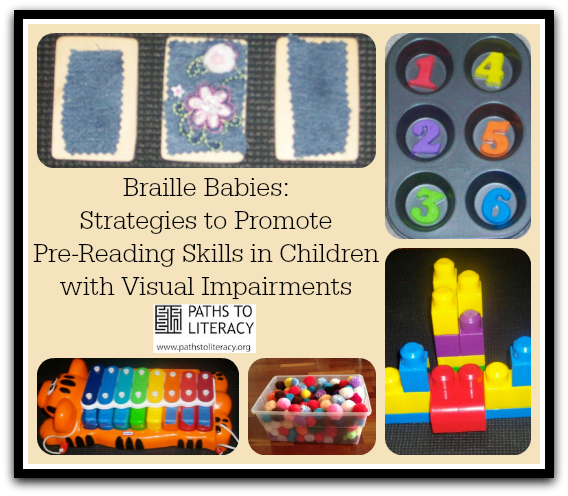
This is the first of two parts. Read Part 2: Braille Babies: Toys to Promote Pre-Braille Skills
Braille Babies was designed after several years of implementing creative methods for teaching braille to young children and their parents, guardians and caregivers. The interventions created for Braille Babies were designed to use materials, toys and items easily found around the home or at local retailers, such as grocery, dollar, craft or discount stores. Parental/guardian involvement is fundamental to making these activities a success and for enhancing braille knowledge of those who have children with visual impairments. Supervision and discretion is advised when implementing these activities with children, as not every activity or device is appropriate for every child and age group. Please follow child safety and choking hazard guidelines and consult with your child’s service or health care
providers when determining which activity is appropriate for your individual child.
Parents who have participated in Braille Babies over the past seven years wanted to begin teaching braille to their children, but frequently expressed frustration and concern over their own knowledge of braille. Some of the parents felt their children were put at a disadvantage because sighted children had ample access to print learning experiences in the early years and commonly begin Kindergarten at least knowing the alphabet and possibly reading. Many parents expressed disappointment that their children would not begin to learn braille until Kindergarten and wondered how they can teach letters and braille basics to their children. For the select parents whose children were being introduced to braille as preschoolers, parents wanted to know how they can supplement braille literacy support at home through their regular routine. Through the activities listed below, participants documented a significant increase in their use of pre- braille literacy usage at home.
It is first important to understand how braille is constructed in order to proceed on to the activities.
Braille is based off of a six dot cell:
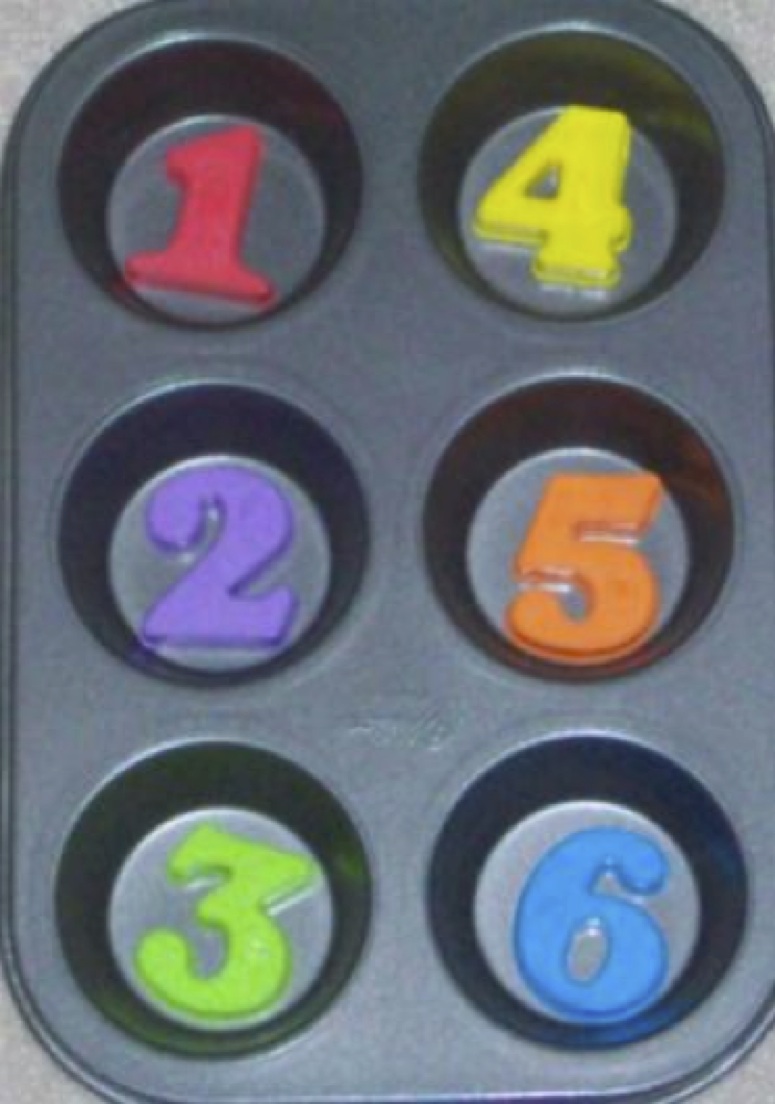
All letters are made through combinations of this six dot cell:
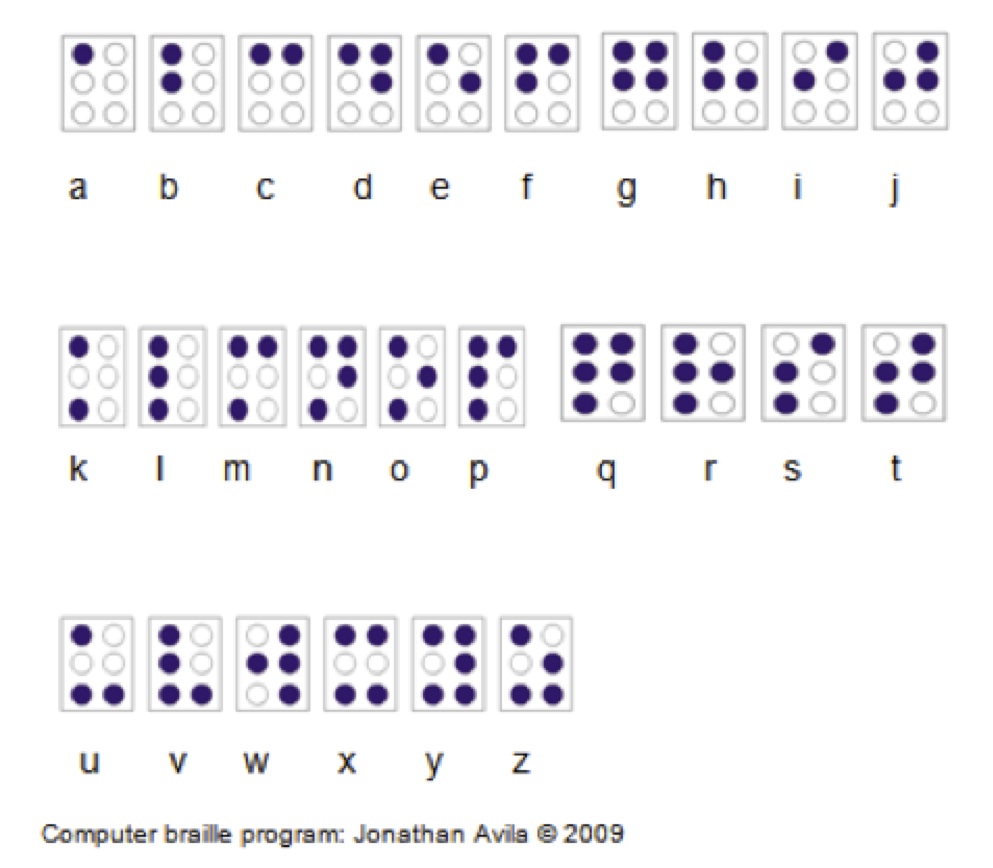
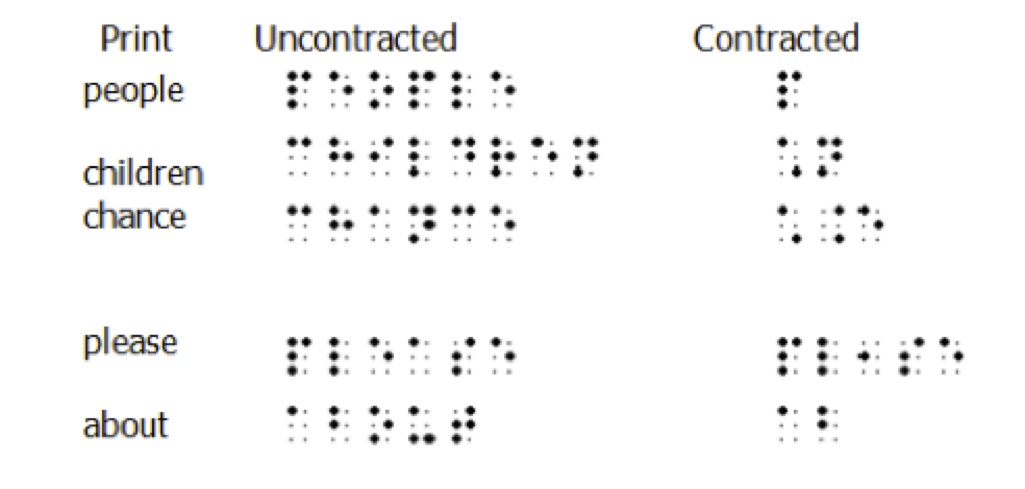
Summary of most popular activities and interventions:
Braille cells are everywhere!
Participants were initially introduced to the concept that those six dots are everywhere! Once the pattern is recognized, it is amazing how frequently the braille cell is identified. Muffin pans, egg cartons, the common arrangement of knobs on a dresser in two columns and three rows should always be pointed out to the child when a braille cell is naturally found in the environment. Children who are not visually impaired have this type of opportunity to look at print letters in fun, large and creative ways, so it is important to make this same learning experience available to children who are blind or visually impaired.
Activities and materials:
Muffin pan: use this 1⁄2 dozen muffin pan to organize and present various tasks to your child. Example, try snack time in a muffin pan! Place the drink cup in dot 4, pretzels in dot 2 and applesauce cup in dot 6. Create variations in how you present the snack and encourage your child to search the cell tactually to find all of the snack items. Consider using small plastic cups or paper muffin liners for the snacks and for ease in cleaning up.
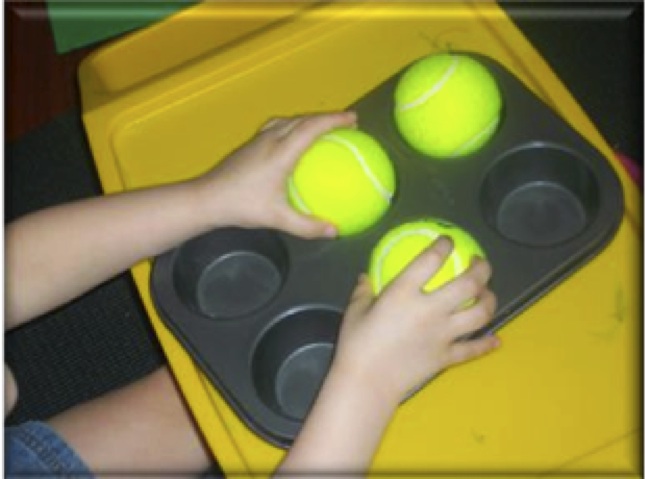
Use the same pan with tennis balls for an easy way to manipulate dots in the cells:
Plastic eggs, cartons and egg displays: Springtime presents an extraordinary time to gather inexpensive materials for encouraging braille. As these items go on clearance, search for fun plastic eggs to fill 1⁄2 dozen egg cartons and ask your local retailers to save cartons holding plastic egg displays. For example, the green, double braille cell below was originally a display for individually wrapped plastic eggs filled with M&M’s. I asked the manager at my local grocery store to hold these displays for me after the spring holidays and retrieved them for free. These cells can be used for making braille letters and for sorting items. Make sure to use the layout of the braille cell to organize projects and activities. Separate beads for jewelry the child is putting together or put a different color of paint in each dot when your child is painting (yes, some children who are blind enjoy painting and the fine motor skill exercise is good for their development). The best part is these trays are disposable and easy to clean.
Stock up on various plastic eggs with differing textures. For example, place one smooth egg in a 1⁄2 dozen egg carton full of football textured eggs. Find eggs that have themes representing you or your child’s interests.
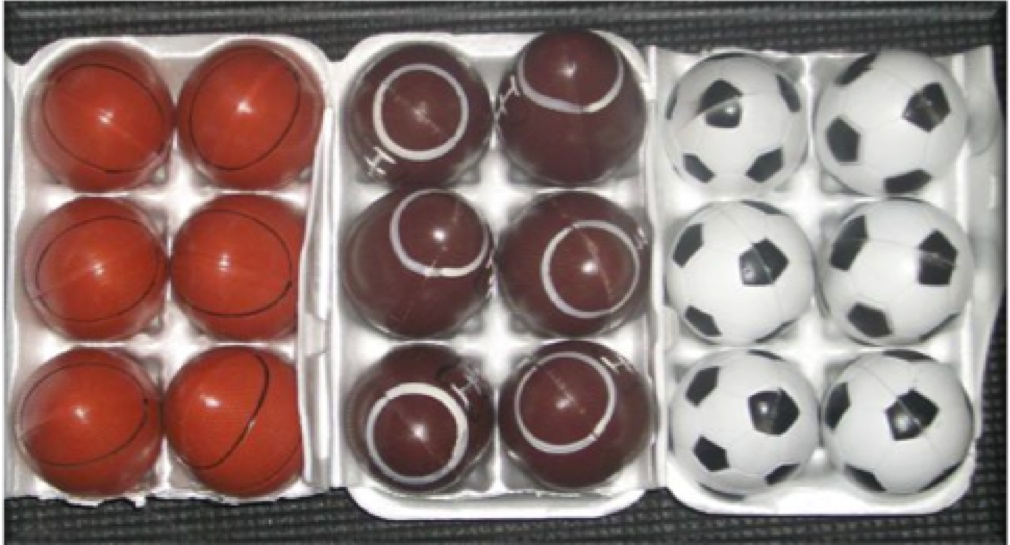
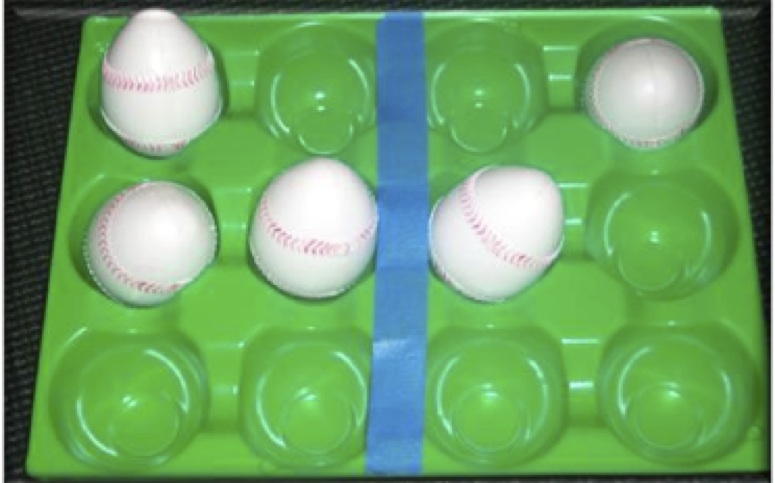
It’s easy to create inexpensive braille cells out of commonly used household items. For example, use Velcro fasteners to form two columns and three rows on the top of a small storage box. Save thin milk lids to serve as braille dots and you have a portable way to take a braille practice toy on the road. Use the box to store extra lids with Velcro for the inevitable loss of dots.
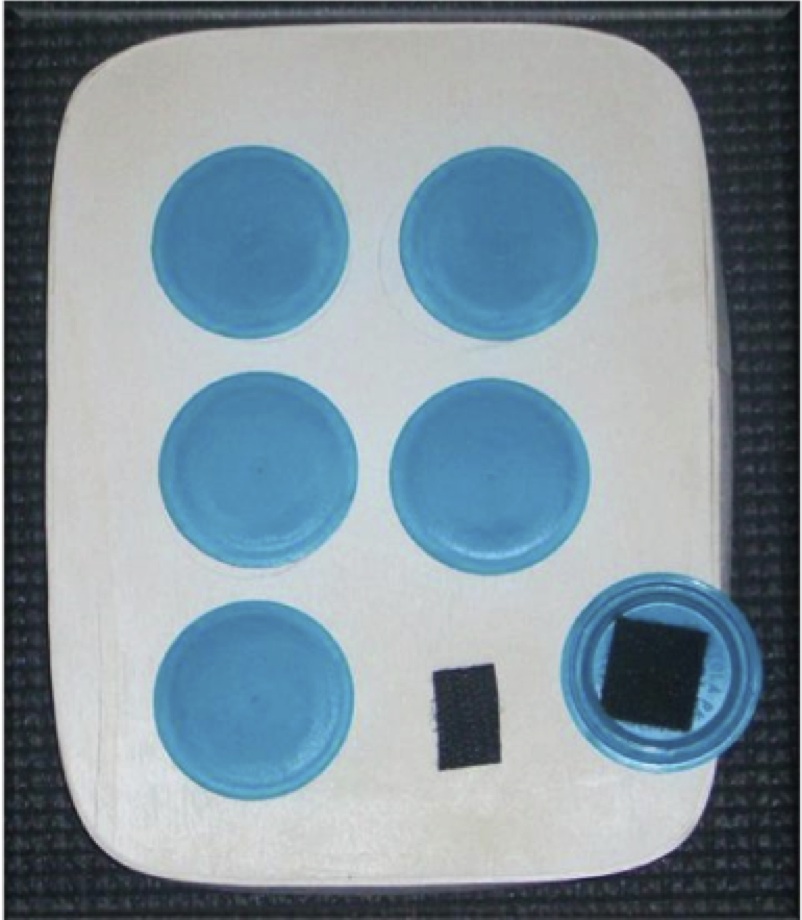
Bang-it-braille
Use a silicone muffin pan and a rubber mallet or toy hammer to play this game. As your child learns the number sequence of braille letters and the actual letters, announce a letter, such as “b” and have the child tap on dots 1 and 2 for “b”.
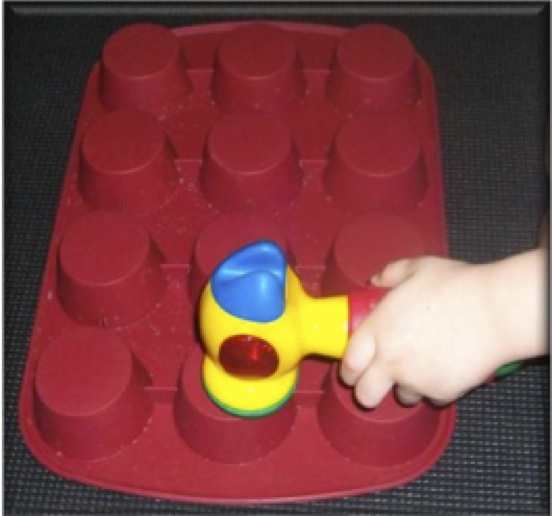
Build-it-braille
Did you know that Mega Bloks from Mega Brands are the perfect braille building blocks? These blocks are readily available in toy stores and the single and triple blocks can be formed to make an interactive braille cell!
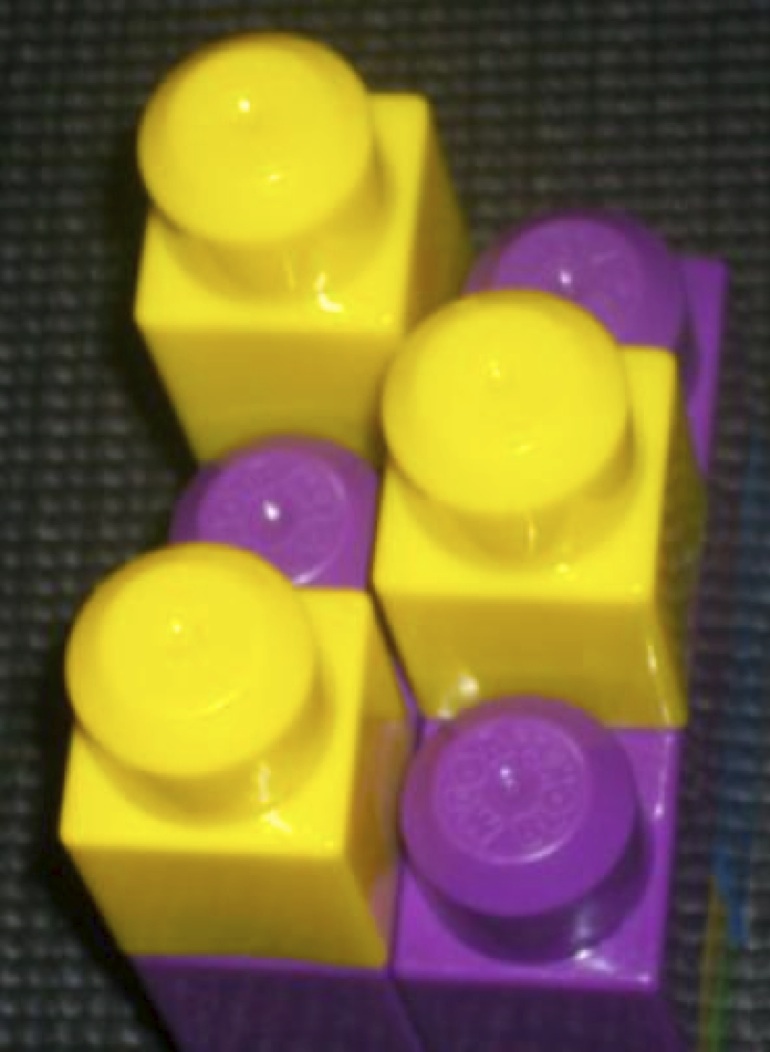
Fisher-Price
The Stack ‘n Surprise Blocks Musical Croc Block Wagon and the Count and Build Snail Pail (pictured below) from Fisher-Price feature the perfect 6-dot cells for young children. These interactive toys are great for getting little hands on braille early on!
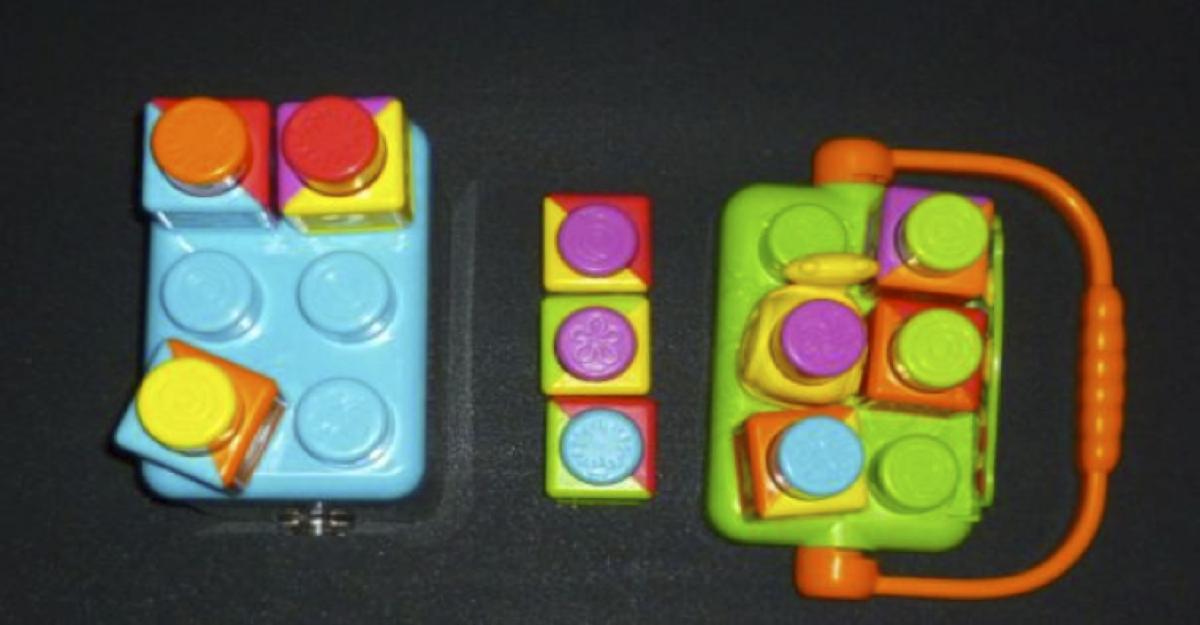
Braille takes on two forms; the two columns and three rows discussed previously, but the six dots can do the “splits” when one writes braille. This arrangement of braille is used for writing braille on a braille keyboard or braille writer.

| Left Index Presses Dot 1 | Right Index Presses Dot 4 |
| Left Middle Presses Dot 2 | Right Middle Presses Dot 5 |
| Left Ring Presses Dot 3 | Right Ring Presses Dot 6 |
| Thumbs are used for the space bar in the middle |
The American Printing House for the Blind (APH) has a fantastic device called the Swing Cell for teaching the concept of the braille cell splitting and has pegs to place in the dots. A couple of parents who have participated in Braille Babies were so fascinated by the use of Mega Blocks as a device similar to APH’s Swing Cell, that they fashioned various hooks to make their own split cell out of these blocks
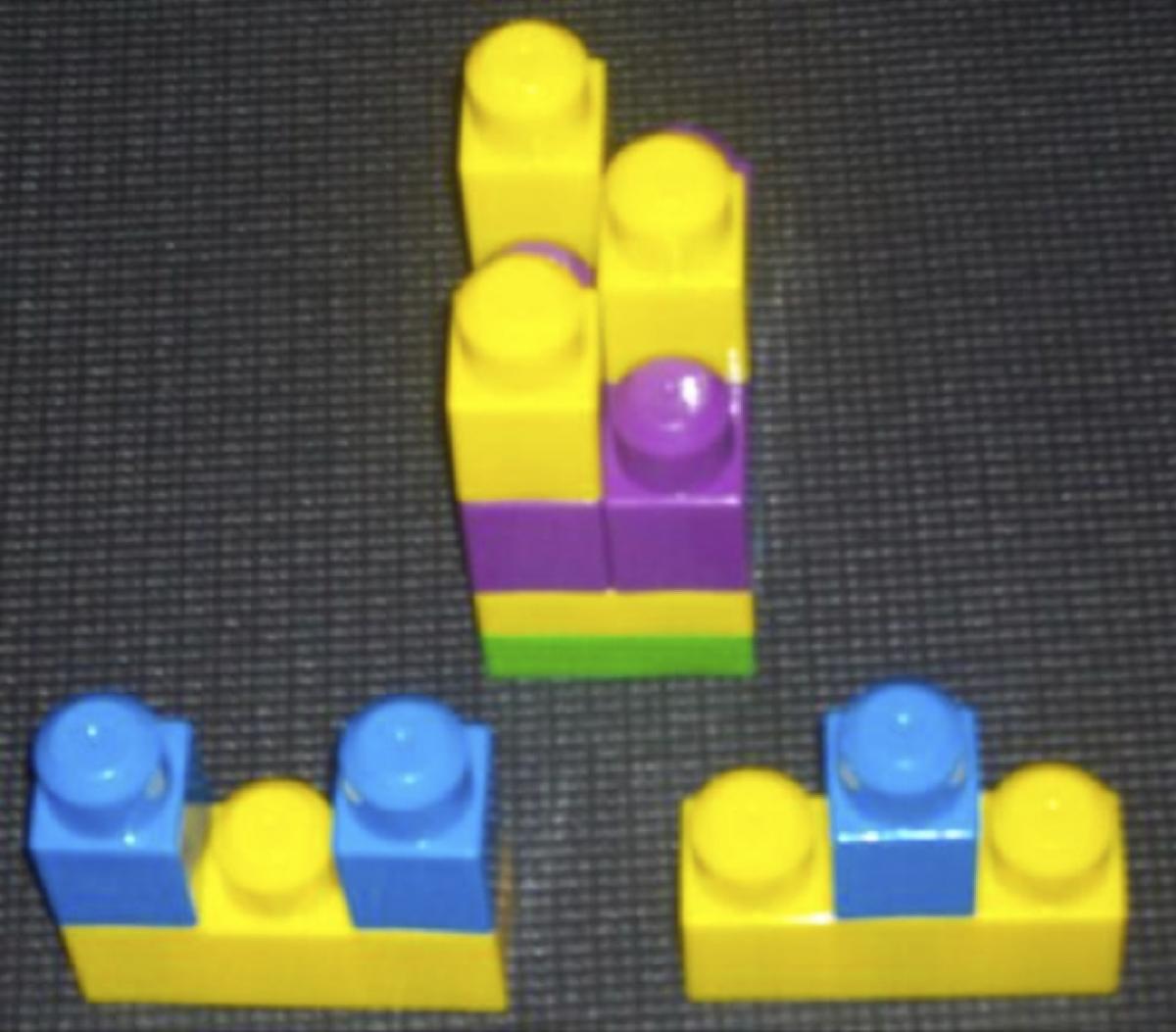
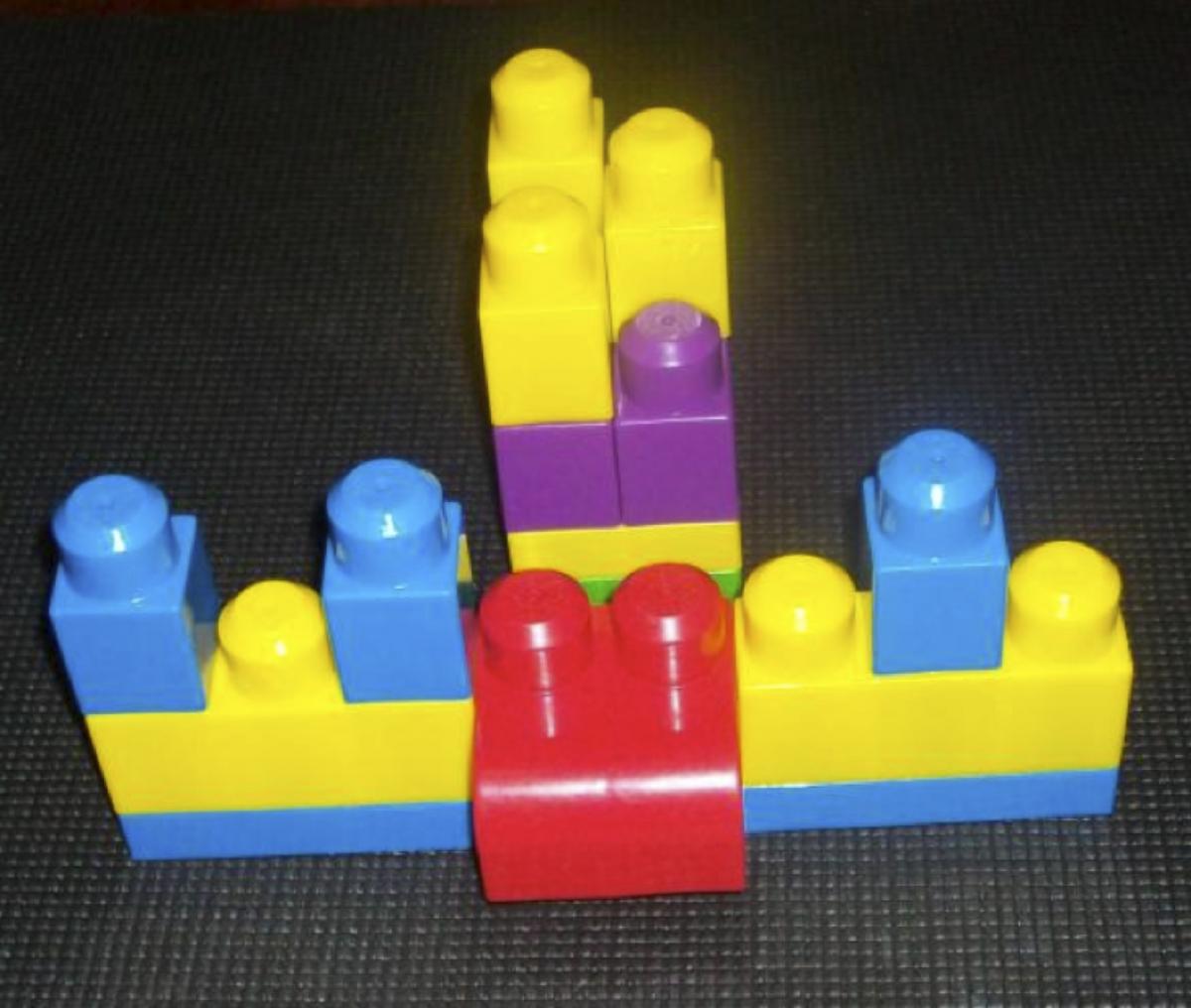
To use the Mega Blocks cell, make two braille cells and present letters for your child to copy. Also, try constructing an actual braille writer for fun out of Mega Blocks! These activities work best with Mega Bloks and not some of the other interlocking blocks, as the availability of single and triple blocks found in many Mega Block kits yield to making a 6 dot cell.
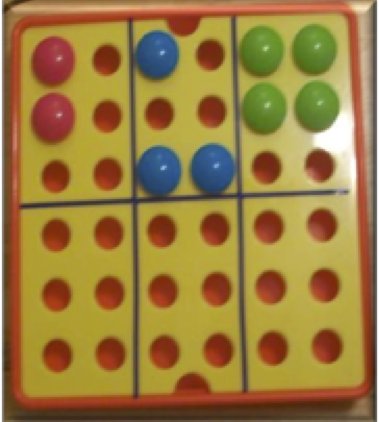
Button-Art-Braille
Buttons make a great tactile way to glue braille letters to a background. However, Button Art made by Alex Little Hands is a fantastic braille cell, button toy readily available in toy stores that sell creative and developmental toys. The game comes with a tray perfectly configured to place 6 full braille cells on the board. Just remove the printed Button Art templates and place graphic art tape to tactually mark the cells. The buttons in the toy are used as the dots! There are endless possibilities for teaching letters for children to copy in the other braille cells. This toy also fosters the growth of fine motor skills.
Braille Sensory and Motor Skills
In addition to being a mode for literacy, braille reading and writing requires fine motor skills, dexterity and strength. Parents who participated in this program frequently expressed concern that their children had difficulties with tactile sensitivity or the motor skills necessary for reading or producing braille. Therefore, these activities were recommended to assist with these concerns.
Sensory Centers:
Parents were encouraged to set up a sensory center in the home and alternate contents periodically. Activities in these centers were designed to help with promoting tactile awareness and pre-reading skills.
Sensory Bins:
Sensory bins are a tried and true means for getting children to explore tactually. Some of the parents were accustomed to the concept of having children dig through dried rice, beans and sand in sensory bins, but expressed frustration over bugs finding the bins, and the mess incurred through using these bins in doors. Alternative sensory bins were presented in Braille Babies that addressed these concerns and included the use of cotton pom pom balls or silk wedding flower pedals.
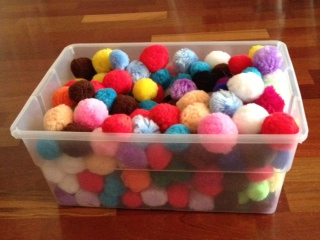
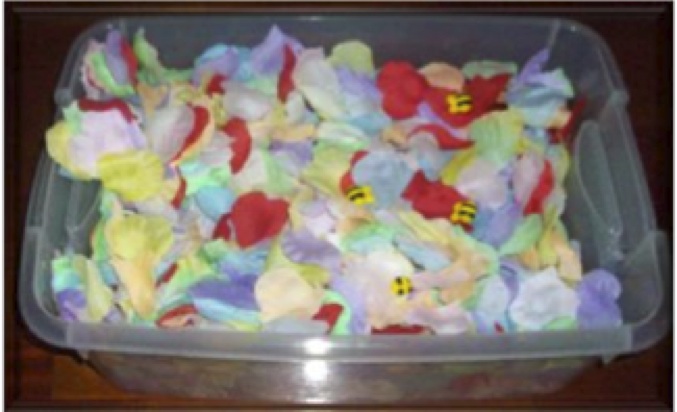
Children using sensory bins are asked to find hidden items in the bin. For example, small rubber ducks in the colorful pom poms or plastic bees made of rubber nestled in the artificial silk flower pedals. Children can play with the contents of the bins to measure, pour, fill, stir and otherwise have a hands-on- learning experience. Parents were encouraged to put containers of various sizes in the sensory bins for this part of the activity.
As a mother, I know children wear through and ruin their clothing rapidly, and as a result, I added the use of fabric to elements of Braille Babies. Use fabrics to make tactile cards for matching and sequencing. Use fabrics from clothing, such as denim, corduroy, silk or terry cloth. Other textures, such as vinyl, burlap, screen (window screens) and any other varied texture can be used. Tactile scrapbooking paper can also be purchased at local craft stores to add texture and for use in the below activities. Several varieties of textures, such as fuzzy, slightly rough and bumpy scrapbook paper can usually be found at retailers with larger scrapbook paper inventory.
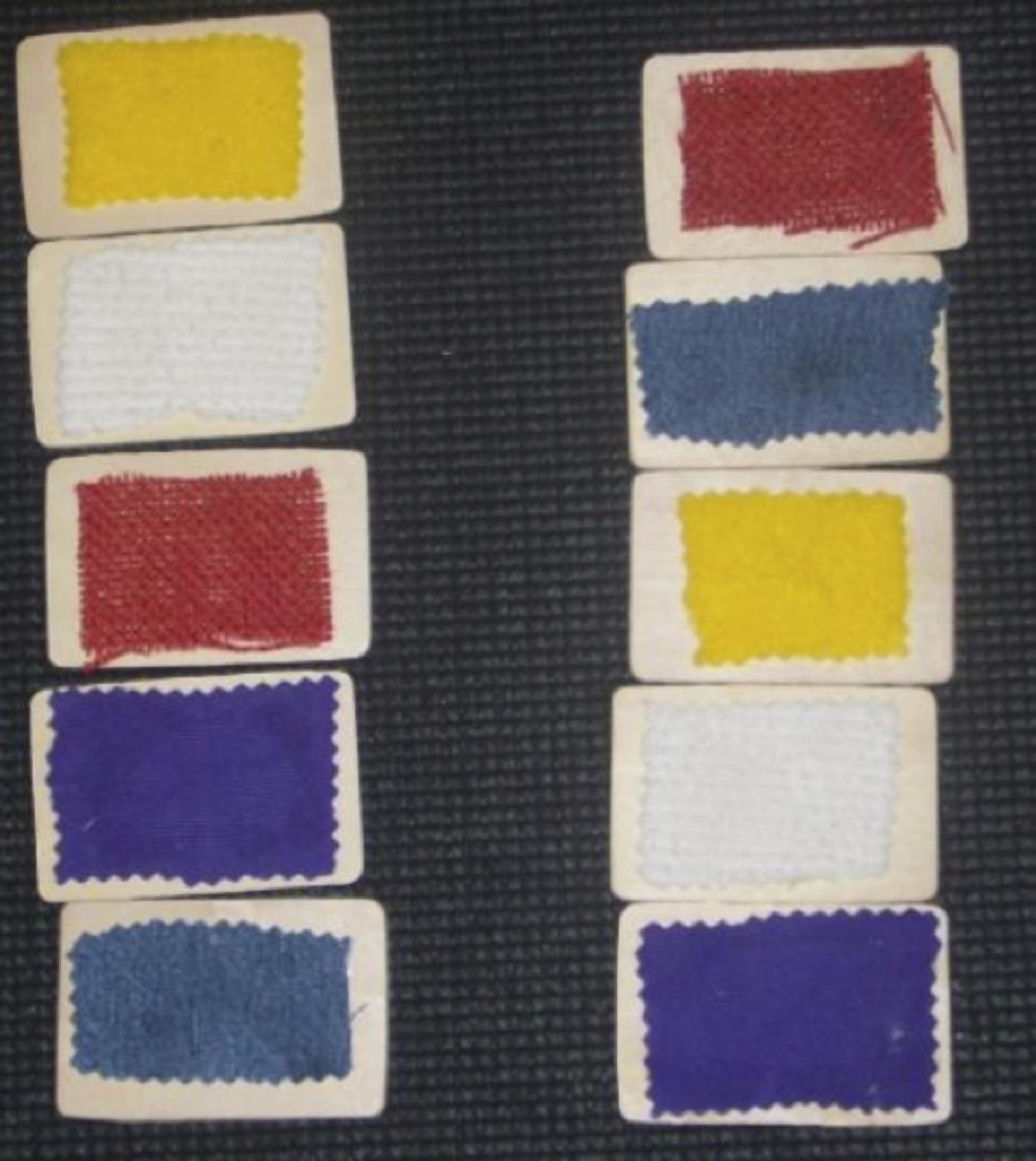
There are several options to use fabric and paper textures to encourage children to explore tactually:
- cover otherwise non-tactually discernable surfaces with the fabric to encourage tactile exploration
- make a set of cards to match from two columns; mount the fabrics on solid cards made of solid foam, plastic or wood
- make same and different tactile games for the child. (For example, two denim cards are presented with a third patterned card. The child is asked to identify which cards are the same and which one is different)
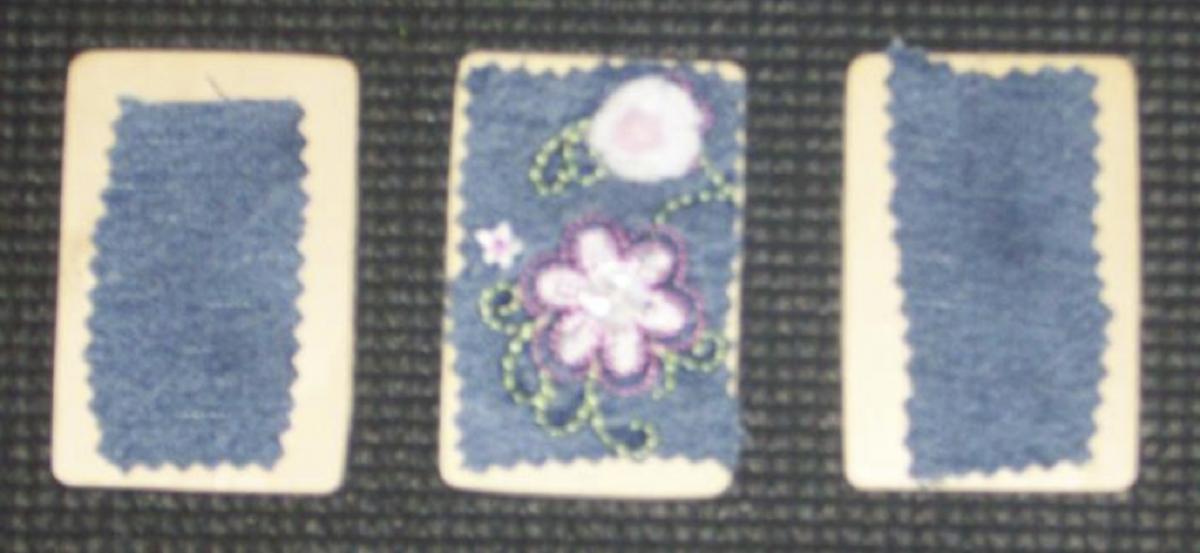
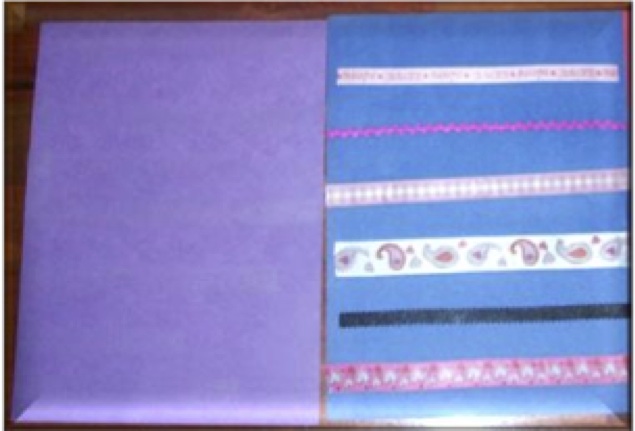
Other games and activities can be constructed and placed at the sensory centers in the home. For example, tracking is a skill all children need to learn for reading. Practice tracking sheets can be easily made with Scotch tape placed on construction paper or various ribbon textures can be used as well. The tape or ribbon provides a clear tactile path to follow from the somewhat rough construction paper. Children are encouraged to track left to right to find various items placed on the tracking paths. Parents may place a cracker at the end of each path for the child to find. They may place foam stickers or tactile scrapbooking embellishments on the path and ask the child to count the number of stickers on the line. Parents who enjoyed using this activity with their children came up
with many variations of this tracking game on their own as well.

Comments
Braille Creativity
wonderful idea